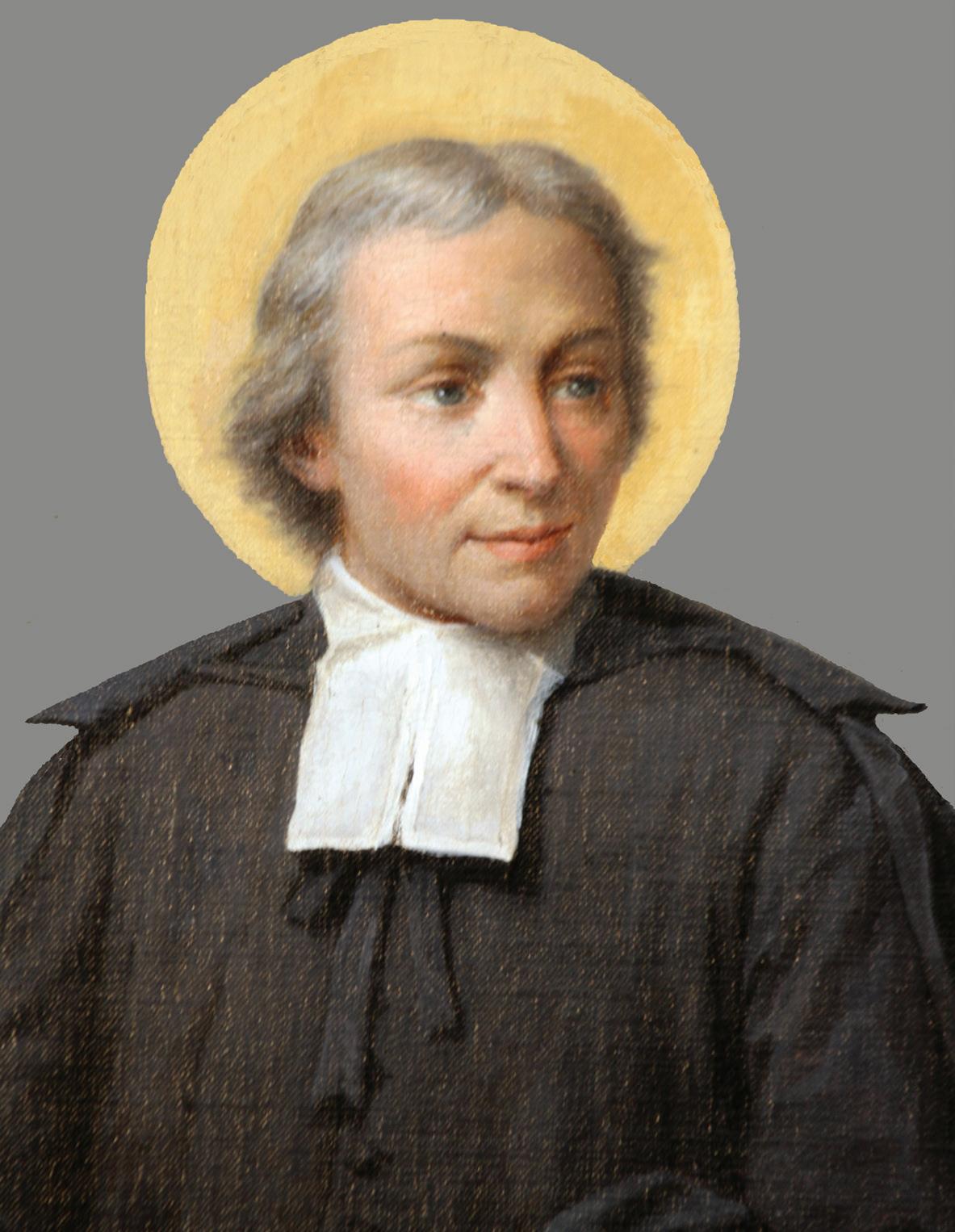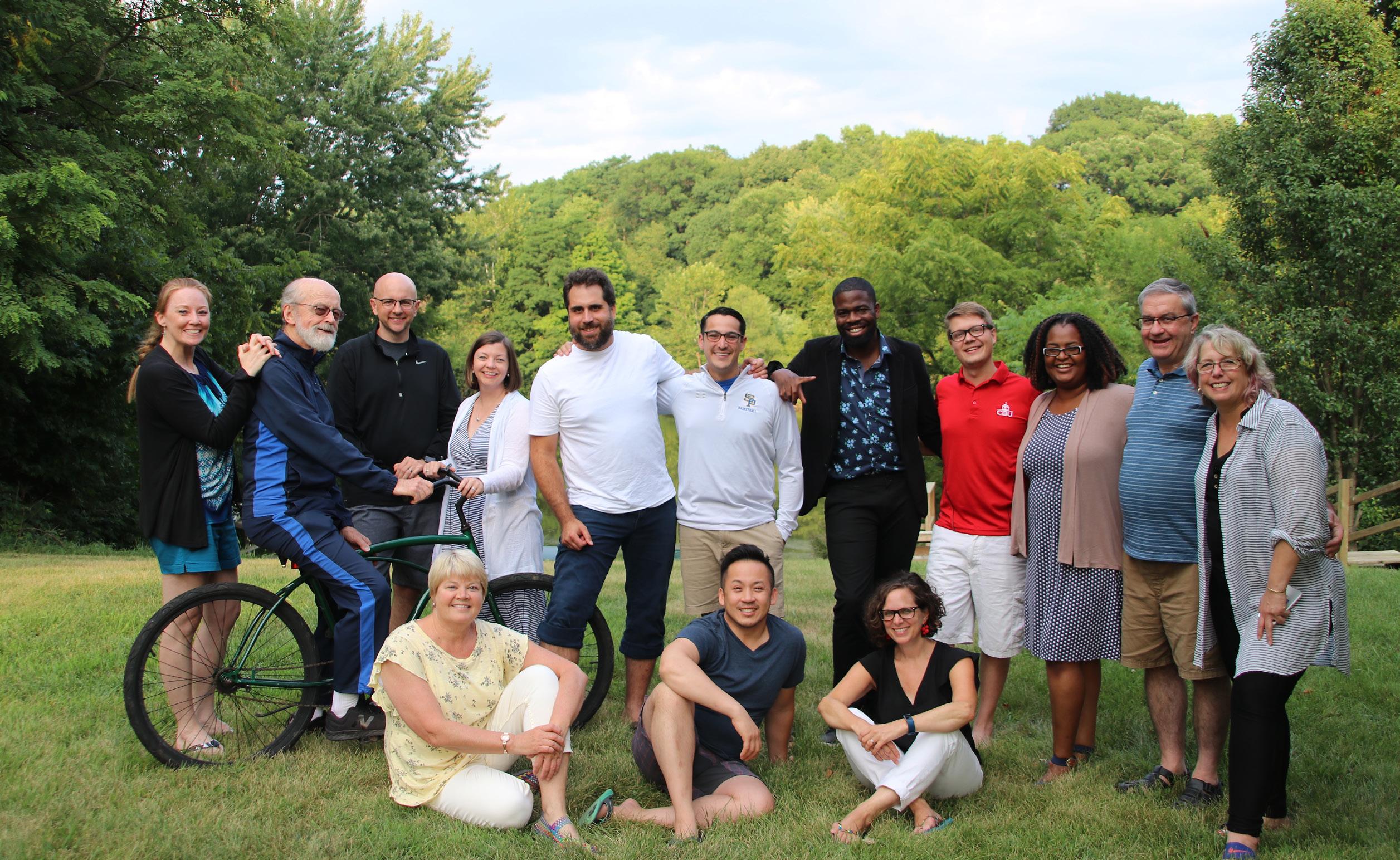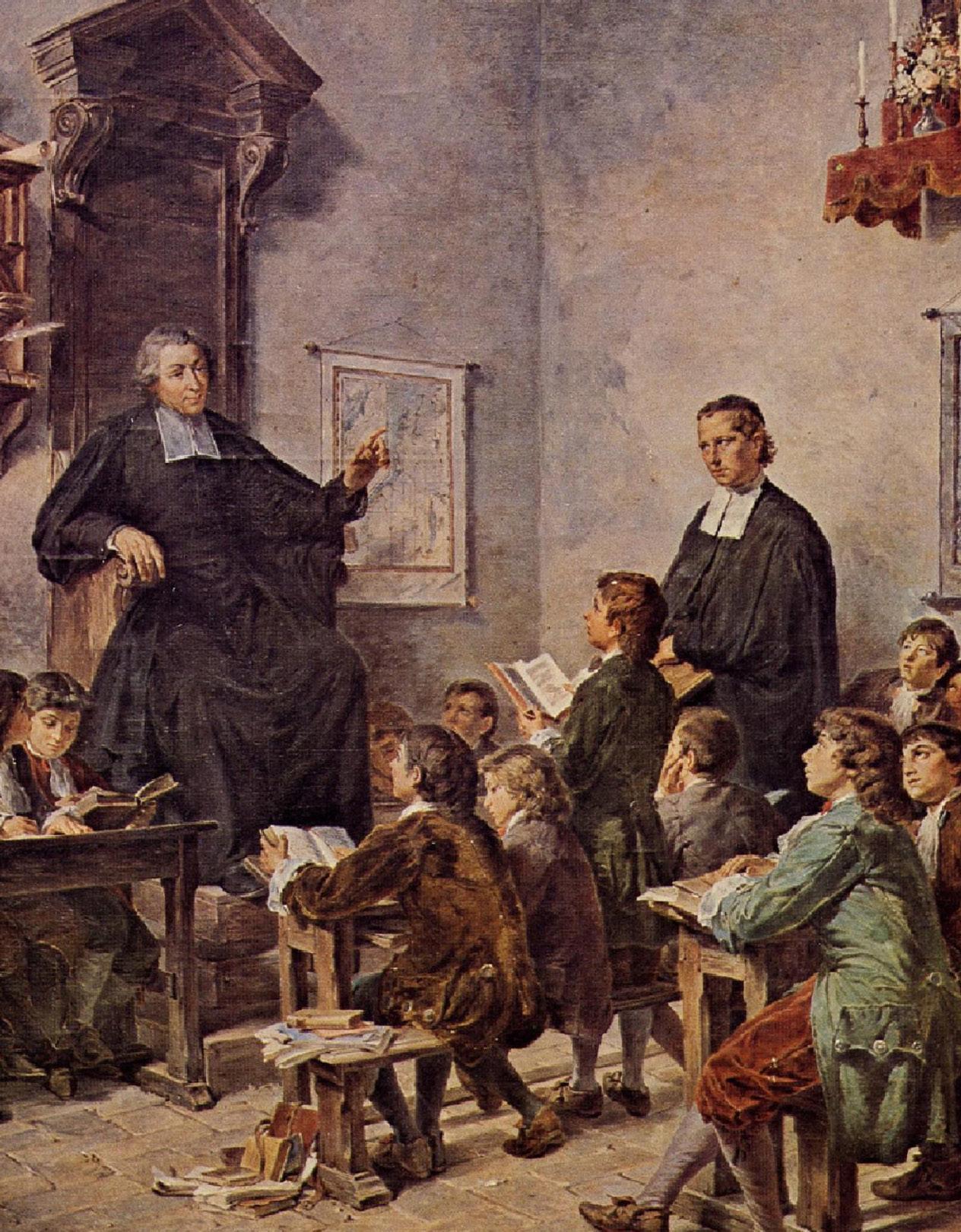
11 minute read
Our Founding Story
SAINT JOHN BAPTIST DE LA SALLE’S JOURNEY TO ESTABLISH THE BROTHERS OF THE CHRISTIAN SCHOOLS
BY ELIZABETH MOORS JODICE
Advertisement
Saint John Baptist de La Salle was born into a life of privilege, raised in a wealthy family in 17th century France. He was set on a path to becoming a high-ranking Church leader and/or theologian. However, a brief encounter with someone who wanted to establish a free school for poor boys set De La Salle on a much different path, a path that even De La Salle later acknowledged he had no intention of taking.

This unexpected journey led him to establish the Brothers of the Christian Schools (De La Salle Christian Brothers), to become an innovative educational pioneer and advocate for the poor, to bring about an educational movement that still inspires thousands of educators, and on May 15, 1950, to be named the patron saint of all teachers of youth.
Today, more than 300 years since De La Salle helped to establish that first school, the Lasallian mission is thriving. In the pages ahead, we look back at how this transformative mission began and how providence guided De La Salle’s journey through the events of his life.
DE LA SALLE’S EARLY YEARS
John Baptist de La Salle was born in Reims, France, on April 30, 1651. The eldest son of Nicolle Moët de Brouillet and Louis de La Salle, he was one of 11 children, seven of whom survived to adulthood.
Early on, while it might have been expected that he would follow in his father’s footsteps as a court magistrate, he chose to pursue the priesthood. At 16, he received the distinguished position of canon. At 19, he moved to Paris to study at the Sorbonne and resided at the prestigious Seminary of Saint Sulpice.
Within 18 months, however, his world changed dramatically. His parents passed away, leaving him as executor of the family estate and guardian of his four brothers and two sisters. He had to return to Reims, although he was able to continue his studies and eventually was ordained a priest.

ONE STEP LEADS TO ANOTHER
Providence didn’t wait long for its next surprise. Within three weeks of De La Salle’s ordination, his close friend and spiritual advisor, Nicolas Roland, died. In his will, Roland left De La Salle to oversee the Sisters of the Child Jesus, a group that Roland had established in Reims, and to obtain for them official recognition from the city. De La Salle obliged, and, because of the lengthy process involved, learned about the educational situation in Reims along with the politics surrounding the establishment of a new charitable group.
A chance encounter on the steps of the Sisters’ convent in March 1679 launched De La Salle into direct involvement in the world of education. He met Adrien Nyel, a layman who had worked in Rouen, France, for many years, providing schooling for the poor. A wealthy widow had asked Nyel to start a free school for poor boys in Reims. Upon arrival, Nyel’s first call was at the convent of the Sisters, arriving at the same time as De La Salle had. They were introduced, they talked, and De La Salle invited Nyel to stay at his home so that they could consult with others on how to start this school. De La Salle’s help was effective, and the school opened. De La Salle thought that he was finished with that charitable project.
Shortly thereafter, however, another wealthy woman told Nyel that she also would like to endow a school, but only if De La Salle would stand behind it. Reluctantly, De La Salle agreed, assuring her that he would help make sure that the school ran well. Then a third school was similarly established in another part of the city. And so gradually, De La Salle found himself becoming drawn into a world that was very different than his own, the world of the poor—disadvantaged students, uncultured teachers, parents oppressed by poverty.
After a few years, Nyel suddenly departed to start schools elsewhere, leaving De La Salle to take care of the schools in Reims. De La Salle knew that the teachers were struggling, lacking leadership, purpose and training. He found himself taking increasingly intentional steps to help this small group with their work.

The Heroic Vow
Courtesy Brother Richard Buccina, FSC
FOUNDING AN INSTITUTE
In 1680, in what is considered to be the founding of the Institute, De La Salle invited the men into his home for meals. This was as much to teach them table manners as to inspire and instruct them in their work. A year later he brought the teachers to live with him. Not surprisingly, his relatives strongly disapproved of these invitations.
His siblings successfully sued him for the house. De La Salle and the teachers moved to the poor part of the city, renting a house that would come to be called “the cradle of the Institute.” It was here that De La Salle and the teachers first began to call themselves “Brothers.” Community life became more formalized, and teaching gradually followed a common method and approach.
Even though they were doing better, the Brothers were concerned about their stability and security. De La Salle replied by telling them to trust in God’s Providence. The men responded that it was easy for De La Salle to say that, since he was wealthy and received an income as a canon. If the schools failed, they had nothing, but De La Salle would be fine.
De La Salle wrote later that he was reduced to silence. He considered donating his wealth to the community. But he instead resigned his position as canon, and in the winter of 1683-1684 used the bulk of his family inheritance to feed the poor during a severe famine. He had now joined the Brothers in poverty, together relying on God’s providential care.
At the Brothers’ General Assembly in 1686, they approved a distinctive habit, took a vow of obedience, and officially adopted the name “Brothers of the Christian Schools.” A year later, De La Salle insisted that the Brothers elect one of their own as Superior. The Brothers reluctantly agreed, electing 24-year-old Brother Henri L’Heureux. De La Salle was the first to show strict obedience to him, which caused considerable controversy in Church circles. The archbishop ordered De La Salle to resume his position as Superior, and he did.
In 1688, he and two Brothers traveled to Paris where they revitalized a school for the poor in the parish of Saint Sulpice. This move established the group’s autonomy and freedom from the diocesan jurisdiction of Reims, and it allowed the Brothers in Reims to begin to develop without De La Salle.
RESPONDING TO CONTROVERSY
As the Brothers began to establish other schools in Paris, a perfect storm of difficulties arose. Because their free schools were open to anyone, not just the poor, they faced lawsuits, hostility, harassment and violence. Back in Reims, the 16 Brothers dwindled by half as Brothers left. Some devoted Brothers fell ill and died through overwork. De La Salle himself underwent a lengthy illness that brought him near death. The outlook for this enterprise suddenly seemed bleak.
In response to these crises, De La Salle brought the Brothers to Vaugirard, a simple, country property he had purchased outside of Paris, for an extended retreat. He then asked the Brothers to write to him every month and share their concerns and challenges. In 1691, he and two of his most trusted Brothers made a private “heroic vow,” committing themselves to the establishment of the "Society" even if they were the only three left and had to beg for bread.
BUILDING THE MISSION AMIDST STRUGGLES
In 1694, the first General Chapter was held, where for the first time, De La Salle and 12 Brothers took permanent vows of obedience, stability and association for the educational service of the poor. De La Salle, despite his wish for a Brother to have the office, was elected Superior.
In the years that followed, De La Salle and the Brothers expanded the schools and communities, welcoming many new Brothers. De La Salle wrote a variety of books and other resources, both for use in the schools and for the Brothers and community life. He also faced more legal battles. After one case was about to be unjustly judged against him in 1712, De La Salle gave his lawyer all related documents and left Paris for an extended visit with Brothers in the south of France, outside of the jurisdiction of Paris.
On this journey, which lasted more than two years, De La Salle grappled with the dispiriting evidence that his presence and activities in Paris had seemed to harm the mission. In Marseilles, he started a novitiate, only to see it close when the local views regarding the Brothers and the Church came into conflict with his own. He ended up moving into the Brothers community in Grenoble, inspiring the Brothers, teaching when needed, and finding time for personal retreats.

A view of Parménie.
Courtesy Institute of the Brothers of the Christian Schools Communications Service
DE LA SALLE’S PERSONAL STRUGGLES
By now, De La Salle’s physical health was poor, his long labors had worn him out, the difficulties in Paris continued to be a personal challenge, and the future was unclear. He pondered the usefulness of his presence within the Institute and wondered whether God was taking him on a different path. He spent several weeks at a hillside retreat house in nearby Parménie, guided by a devout and pious if illiterate visionary, Sister Louise.
Providence touched him once more. In 1714, he received a letter from the Brothers of the Paris area, where external Church authorities were tampering with the Brothers’ self-governance and rewriting their Rule. The Brothers wrote: “We, the principal Brothers of the Christian Schools … command you in the name of the body of this Society to which you have vowed obedience … to immediately take up again responsibility for the overall government of our Society.”
With Sister Louise’s encouragement, De La Salle returned to Paris. As the Brothers opened the door, he said, “Here I am. What do you want me to do?”
Even with De La Salle’s return, he allowed Brother Barthélemy, who he had asked to look after things, to remain in charge. De La Salle’s presence, connections and guidance helped to resolve most of the difficulties. After a year in Paris, De La Salle moved to Rouen and into Saint Yon—a complex that housed the novitiate, a boarding school and a juvenile detention center. Here he began to make arrangements for another General Chapter.
The Brothers at this time constituted 23 houses and 34 educational establishments throughout France, with 100 Brothers, some 18 novices, and one Brother in Rome. The “principal Brothers” assembled in May of 1717 for their General Chapter. At their request, De La Salle drew up a definitive Rule. The assembly formally elected Brother Barthélemy as the new Superior.
THE SAINT DIES, BUT HIS MISSION CONTINUES
De La Salle ventured forth from Saint Yon a few times, but his age and tireless labors were catching up to him. Returning after one extended visit to Paris, he became very ill. Yet even on his deathbed, his long practice of submission to God’s will, reading events in his life as providential calls from God, found him essentially at peace. When Brother Barthélemy asked De La Salle on the evening before he died if he accepted his sufferings, De La Salle replied, “Yes, I adore God guiding me in all the events of my life.” These were his last words.
On Good Friday, De La Salle made an effort to rise as if to greet someone, then joined his hands, raised his eyes to heaven, and died. He was buried on Holy Saturday in a side chapel of the local parish church, Saint Sever. Word soon spread that “the Saint is dead.” But the providential extension of his life, work and influence was just beginning.
Elizabeth Moors Jodice is director of communications for Christian Brothers Conference.
Information for this story came from: District of San Francisco, Signs of Faith, Fall 2000, vol. 3, #1 (Napa, CA); In the Footsteps of De La Salle, www.dlsfootsteps.org; and Brother George Van Grieken, FSC, Touching the Hearts of Students (Landover, MD: Christian Brothers Conference, 1999).








